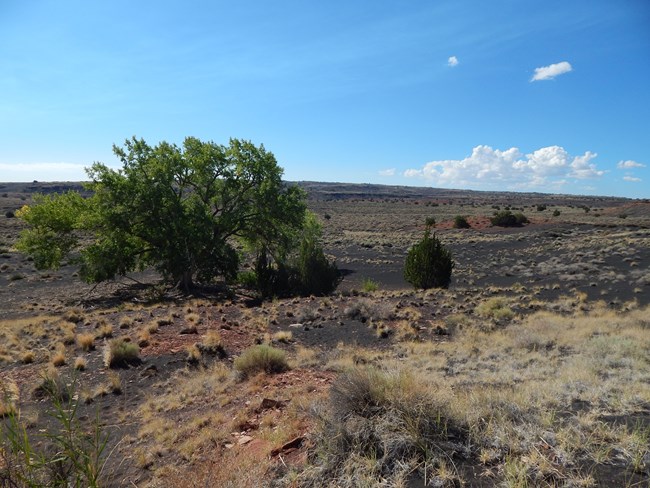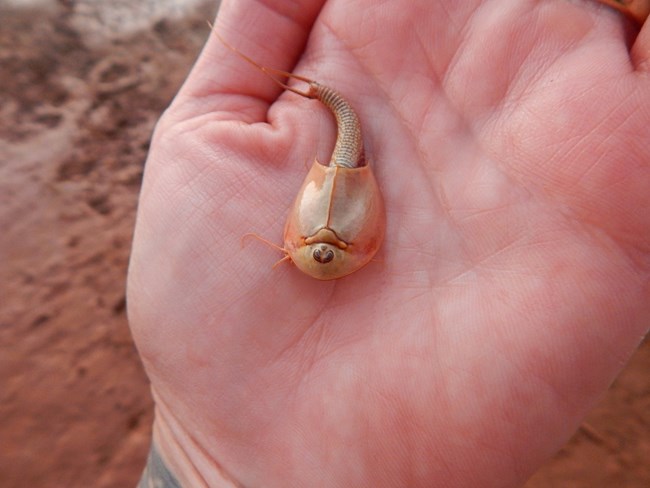
Surface water is scarce in Wupatki– only some small springs, seeps, and catchments. There are three natural springs within the monument; all have served human and wildlife needs for many years. In recent years, all have been modified by Navajo occupants, ranchers, and/or the National Park Service. Spring flows are highly variable, increasing during winter and spring, and declining through the summer and fall. Water flow is believed to have steadily diminished during the 20th century, possibly due to long-term weather and vegetation changes. Today only one spring remains a perennial, or year-round, source of water for wildlife. 
Water is available at times in ephemeral pools – temporary puddles of water that accumulate in rock hollows and in arroyos after storms. Water also collects in stock tanks that once served cattle and in catchment basins constructed by Ancestral Puebloan peoples 900 years ago or more. Any of these can provide a cooling drink for wildlife. Depending on the size, depth, and location of a pool, it may offer a surprise: a thriving population of insects, fairy shrimp, or even tadpoles which will emerge as spadefoot toads. |
Last updated: December 15, 2023
